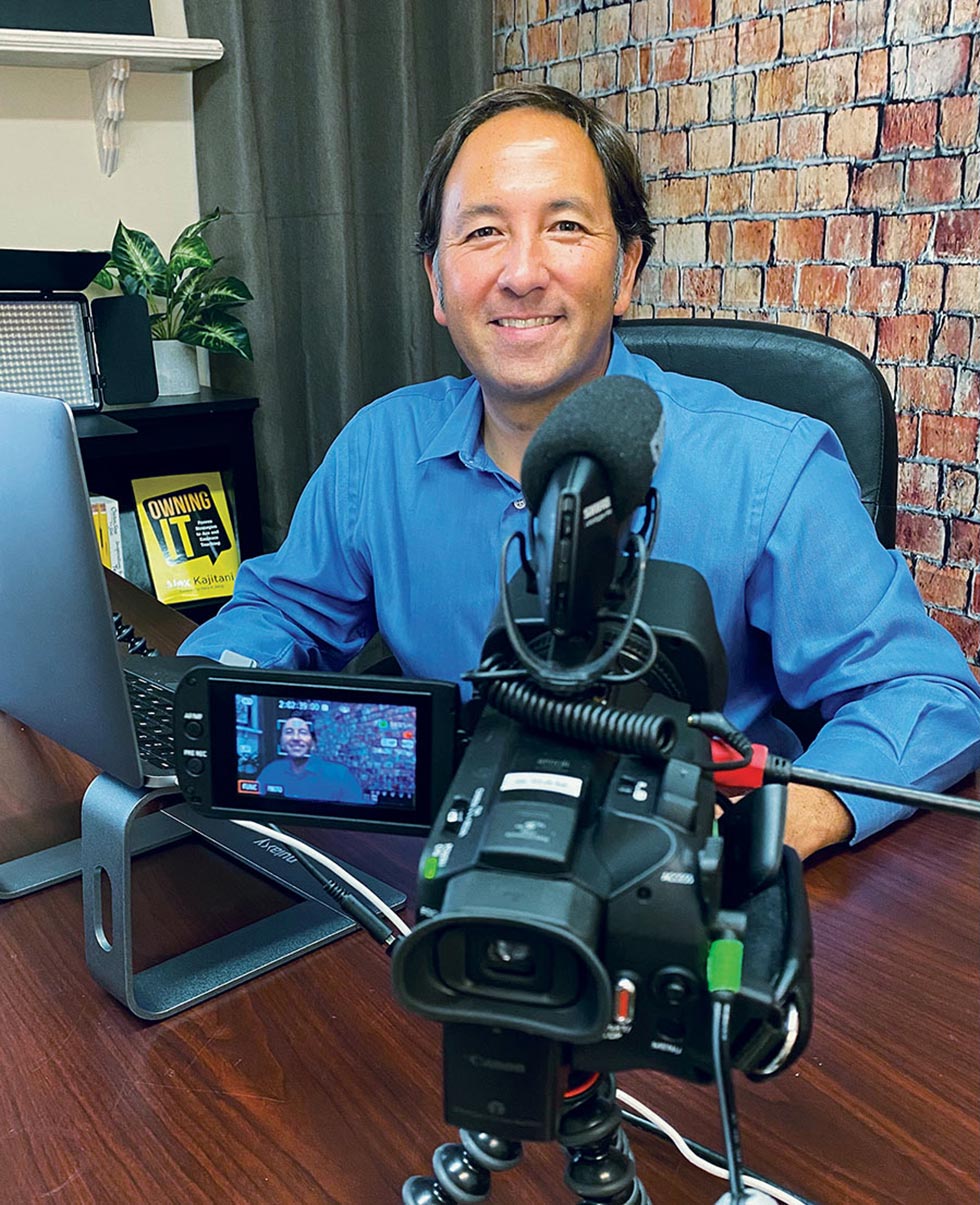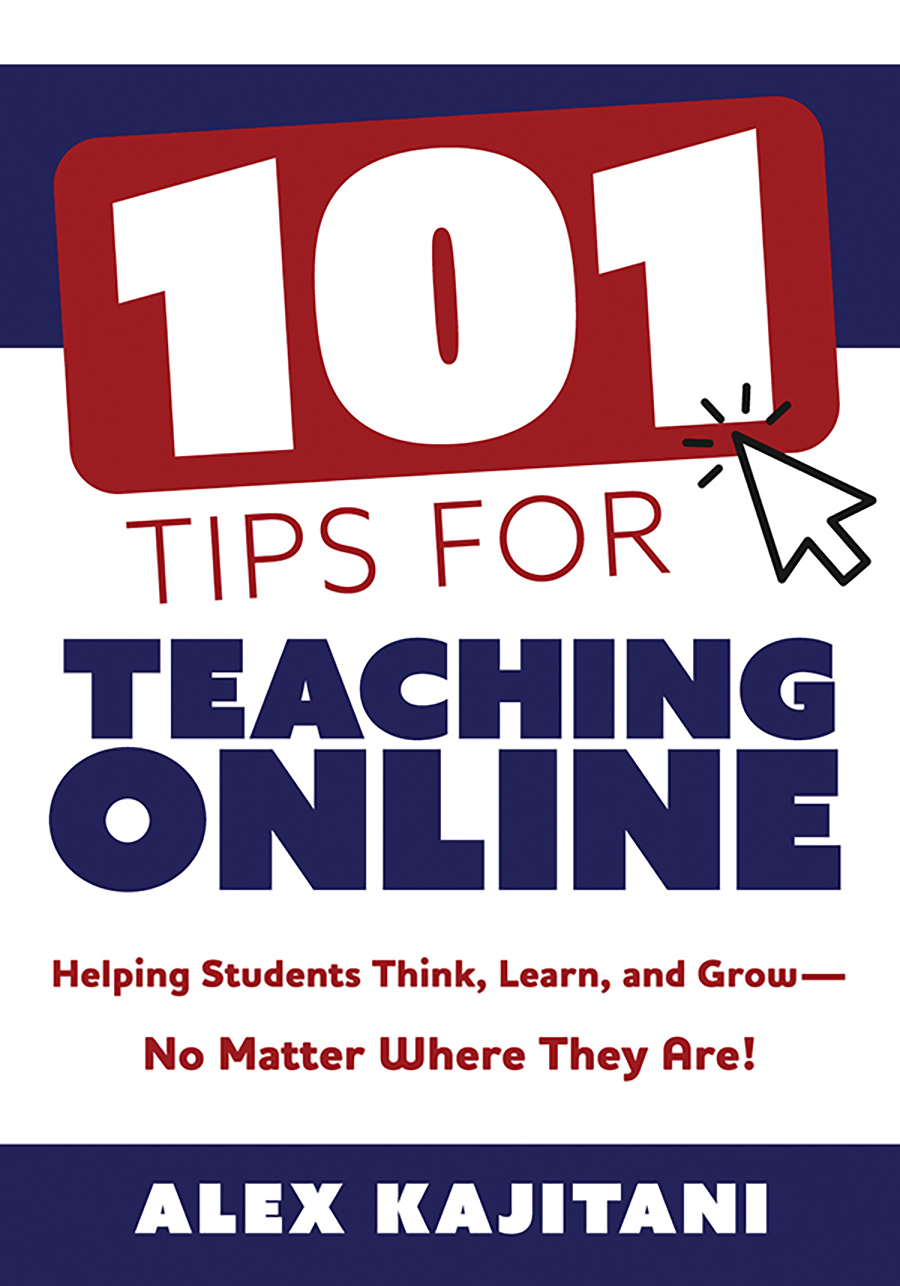hose were the last words I said to the principal at North High School in Annapolis, Maryland in March of 2020 as the school doors were being locked. I had been coaching a group of teachers on the best ways to teach math when we received word that schools across the district were closing their doors due to COVID-19.
Of course, “schools across the district” soon became “schools around the world,” and teaching as we knew it was about to change forever. As students were sent home for who knows how long, millions of teachers around the world scrambled to figure out how to teach online.
Sure, some teachers had been teaching online long before the pandemic, but never before had we all been teaching online. Some teachers jumped in with enthusiasm. Others resisted. But together, we were all tasked with navigating this new world and embracing its possibilities.
We started with the question, How do we take the old reality of teaching and put it on Zoom? But it soon became clear that we needed to be asking a different question: How do we build a new online teaching reality where students can thrive—from wherever they are?
Wanting desperately to help, I decided to try to reach those kids and parents as quickly as possible. I scrambled to create what I called The Wacky Math Show—a free, weekly, live Zoom class that anyone could join. Being one of the first teachers to offer something like this, I had the terrifying pleasure of working out some major kinks early on. (Who knew, at the time, that students would immediately figure out how to draw on the teacher’s screen?!)

hose were the last words I said to the principal at North High School in Annapolis, Maryland in March of 2020 as the school doors were being locked. I had been coaching a group of teachers on the best ways to teach math when we received word that schools across the district were closing their doors due to COVID-19.
Of course, “schools across the district” soon became “schools around the world,” and teaching as we knew it was about to change forever. As students were sent home for who knows how long, millions of teachers around the world scrambled to figure out how to teach online.
We started with the question, How do we take the old reality of teaching and put it on Zoom? But it soon became clear that we needed to be asking a different question: How do we build a new online teaching reality where students can thrive—from wherever they are?
Wanting desperately to help, I decided to try to reach those kids and parents as quickly as possible. I scrambled to create what I called The Wacky Math Show—a free, weekly, live Zoom class that anyone could join. Being one of the first teachers to offer something like this, I had the terrifying pleasure of working out some major kinks early on. (Who knew, at the time, that students would immediately figure out how to draw on the teacher’s screen?!)
I researched strategies for taking advantage of the unique qualities of the online environment to engage and educate students in a multitude of ways that work for them creatively and successfully. All the while, I tried to help my fellow brick-and-mortar classroom educators navigate this new world of online teaching.
The Biggest Challenges
Of course, as the pandemic unfolded and we realized none of us were returning to our regular in-person classrooms anytime soon, I began to get calls from concerned parents and teachers.
From parents I heard things like, “I walked by my child’s bedroom and peeked in. The teacher was talking but my kid was totally unengaged and distracted by something on their phone.”
…[other teachers] focused on what they knew were the make-or-break elements of any effective classroom: building relationships with students, keeping them engaged, and making sure they were safe.
From teachers I heard things like, “It’s hard to get students to show up at all. Some of them won’t turn their cameras on, so I don’t even know if they’re watching.”
From students I heard things like, “I don’t want to turn my camera on, because I don’t like the way I look on camera.” Or, “I don’t want everyone in my class to see my house.” I also heard, “I don’t have internet at my house, so I have to find somewhere in my neighborhood that will let me sit there all day.”
All of these issues clearly needed to be addressed to create this new online teaching reality.
Alex’s book, 101 Tips for Teaching Online, is a fun and meaningful resource packed with practical tips for making the most of an online classroom environment, with strategies to ensure students feel welcomed, engaged, and empowered to own their learning. His book can be purchased at amzn.to/3te8Qzo.
In the pandemic pandemonium, some teachers rushed to learn about the latest online program that would help students complete and track academic work in the virtual space. But others focused on what they knew were the make-or-break elements of any effective classroom: building relationships with students, keeping them engaged, and making sure they were safe. These teachers understood that only with these elements can students thrive academically, no matter their environment—and they’re the teachers I found to be most successful in this new reality.
One great example is Lyn Porter, a physical education teacher in the small town of Williston, Vermont. When her school closed its doors and moved to online teaching, she wanted to make sure she had a way to stay in touch with her students, and to get them outside and moving their bodies. Lyn came up with a brilliant way to do this. In her own words:
“I gathered and painted about four hundred rocks that have been hidden around our community, in hopes that the families will go out for a bike ride, or a hike, or a walk; find these rocks; and then post a picture of where they found them.
“The rocks also have positive messages written on them, like ‘Tomorrow will be a better day,’ or something silly like a drawing of a T-shirt on a clothes hanger that says, ‘You wanna hang out?’ It’s something that makes the kids and their families smile and [is] a positive experience for them as they’re out engaging in the community.”
Lyn told me that parents, grandparents, and community members all got invested in finding the rocks, too. This added human connection to the outdoor exposure and exercise—as we know, all elements that were hard to come by in those times.
Re-Thinking What Counts as “Class Participation”
- I ask the class a question.
- Students who want to answer raise their hand.
- I call on a student to answer.
Of course, for every student who raises their hand, there are several who don’t. They sit there quietly while I demand no participation from them, instead opting to continue to get through all the material I need to cover because the bell is going ring soon.
I learned quickly to find different methods of interacting with and engaging students online. I found that students who were not inclined to raise their hand to answer were actually very willing to put a comment in the chat box, or answer a survey when prompted. Students who normally seemed too shy and reserved to speak in class (especially students who were learning English) were thrilled at the opportunity to record a video and post it for the class to see, especially since they could record it as many times as they wanted and submit the one that made them feel proud. Students also loved submitting video responses to each other!
With some creativity, my fellow formerly brick-and-mortar teachers and I found many online methods to engage those students who rarely spoke in the in-person classroom.
As I spoke to more and more teachers who were seeing success teaching online (and many who were not), I realized that we needed a handbook filled with easy-to-implement tips and strategies, all in one place, so that any novice or veteran teacher could be highly effective when teaching online. I set out to do just that with my new book, 101 Tips for Teaching Online. (Many of the tips are also effective for teaching in-person or in-between!)
To research this book, I interviewed teachers across the country about what was working, and how other teachers could make online teaching work as well. I also interviewed parents and the students themselves, who gave some pretty candid advice to teachers on how to create online environments and communities where they feel safe, loved, and confident.
The book offers advice on everything from how to make sure you look good on camera (for example, stop looking at yourself on the screen and look directly into your camera) to some of the bigger, more challenging systemic issues we face, such as providing our students an equitable education that ensures high levels of learning. And, of course, there’s a chapter on how we can all take care of ourselves to avoid burnout and stay healthy, motivated, and inspired.

